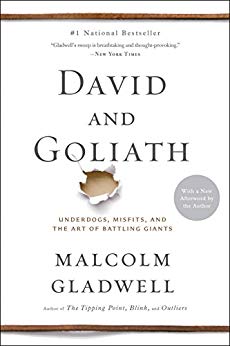

This article is an excerpt from the Shortform summary of "David and Goliath" by Malcolm Gladwell. Shortform has the world's best summaries of books you should be reading.
Like this article? Sign up for a free trial here .
Who is Jay Freireich? And what can this doctor and researcher teach us about making use of so-called disadvantages?
Emil “Jay” Freireich is a doctor who pioneered chemotherapy as a treatment for childhood leukemia.
However, he may never have persevered in the face of criticism and threats of being fired if he hadn’t had such a traumatic childhood. We’ll cover how trauma can be an advantage and what you can learn from Jay Freireich’s success.
Jay Freireich’s Childhood Trauma
Emil Freireich’s parents, Hungarian immigrants, lost everything in the stock market crash of 1929. Shortly after, Freireich’s father died, likely by suicide. Freireich’s mother worked in a sweatshop eighteen hours every day to support her family until she remarried, at which point she fired the Irish maid Jay Freireich considered his real mother.
When he was nine years old, a respectable doctor removed Jay Freireich’s tonsils, and Freireich, having never had a man in his life that he looked up to, decided to become a doctor when he grew up. Another Hungarian immigrant gave Jay Freireich’s mother $25 so he could go to college.
As a child, he had conquered fear over and over again. Traumatic experiences trained him to be courageous in his career and overcome consensus opinion and risk.
Emil Jay Freireich’s Unorthodox Leukemia Treatment
While working at the National Cancer Institute (NCI), Jay Freireich developed two treatment strategies that horrified his colleagues and ended up being the keys to saving thousands of children’s lives.
Jay Freireich’s First Treatment Strategy: Blood Transfusions
The ultimate goal of Jay Freireich’s team was to cure leukemia, but kids with leukemia tend to bleed everywhere, both internally and externally. Young patients were bleeding to death before doctors could treat their leukemia. Freireich held the radical belief that cancer destroyed his patients’ ability to make platelets. This, he said, was why their blood wouldn’t clot.
- Roadblock #1: Because Jay Freireich’s platelet theory was unorthodox, the Institute blood bank wouldn’t give him blood, and he had to recruit blood donors himself.
- Roadblock #2: The conventional tools for transfusing blood were made of steel, rubber, and glass. But platelets stick to these surfaces. Jay Freireich decided to try the new silicon needles and plastic bags.
- Roadblock #3: Transfusing using the new technology was risky. If done incorrectly, it could result in heart failure. Consequently, Jay Freireich’s boss threatened to fire him if he kept transfusing platelets. Freireich ignored him.
The bleeding in Freireich’s patients stopped. The team could now keep them alive long enough to treat their leukemia.
Jay Freireich’s Second Treatment Strategy: Drug Cocktails
At the time, doctors used one of three cell-killing drugs, in limited doses, to treat leukemia. Jay Freireich wanted to use all three at once, plus another derived from the periwinkle plant. All four drugs attacked the cancer cells differently, but doctors still considered combining them extremely dangerous. Freireich’s attitude was, “Why not? They’re going to die anyway.”
- Roadblock #1: Because combining drugs was unheard of, and the periwinkle drug was a brand-new discovery, Jay Freireich and his colleague Frei had to experiment to hit on the right dosage amounts and timing. Some kids became paralyzed in the experimentation process, and two children died.
- Roadblock #2: The NCI advisory board refused to approve the treatment, and Freireich and Frei had to wear down their boss to get approval.
- Roadblock #3: Children started to recover, but then the cancer would come back. Jay Freireich decided to administer chemotherapy every month for a year, even when the children were in complete remission. This was dangerous (and highly controversial)–the drugs wiped out patients’ immune systems, leaving them vulnerable to infections and disease.
Everyone thought Jay Freireich was insane, but he didn’t care. His traumatic childhood had been much worse than the criticism of his peers. Today, the standard leukemia treatment is a modified version of Freireich’s strategy and the cure rate is over 90%.
Why was Jay Freireich so successful? As a child, he had conquered fear over and over again. Traumatic experiences taught him courage. The lesson? Use your disadvantages to your advantage.
———End of Preview———

Like what you just read? Read the rest of the world's best summary of "David and Goliath" at Shortform . Learn the book's critical concepts in 20 minutes or less .
Here's what you'll find in our full David and Goliath summary :
- Why being the underdog can actually be an advantage
- Why you shouldn't be afraid of powerful giants
- Strategies to get an edge when you're overpowered






